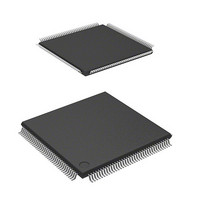HD64F2166VTE33 Renesas Electronics America, HD64F2166VTE33 Datasheet - Page 425

HD64F2166VTE33
Manufacturer Part Number
HD64F2166VTE33
Description
IC H8S MCU FLASH 512K 144-TQFP
Manufacturer
Renesas Electronics America
Series
H8® H8S/2100r
Specifications of HD64F2166VTE33
Core Processor
H8S/2000
Core Size
16-Bit
Speed
33MHz
Connectivity
I²C, IrDA, LPC, SCI, SmartCard
Peripherals
POR, PWM, WDT
Number Of I /o
106
Program Memory Size
512KB (512K x 8)
Program Memory Type
FLASH
Ram Size
40K x 8
Voltage - Supply (vcc/vdd)
3 V ~ 3.6 V
Data Converters
A/D 8x10b; D/A 2x8b
Oscillator Type
Internal
Operating Temperature
-20°C ~ 75°C
Package / Case
144-TQFP, 144-VQFP
Lead Free Status / RoHS Status
Contains lead / RoHS non-compliant
Eeprom Size
-
Available stocks
Company
Part Number
Manufacturer
Quantity
Price
Company:
Part Number:
HD64F2166VTE33V
Manufacturer:
Renesas
Quantity:
200
Company:
Part Number:
HD64F2166VTE33V
Manufacturer:
ON
Quantity:
75
Part Number:
HD64F2166VTE33V
Manufacturer:
RENESAS/瑞萨
Quantity:
20 000
- Current page: 425 of 876
- Download datasheet (5Mb)
14.4.3
Either an internal clock generated by the on-chip baud rate generator or an external clock input at
the SCK pin can be selected as the SCI’s transfer clock, according to the setting of the C/A bit in
SMR and the CKE1 and CKE0 bits in SCR. When an external clock is input at the SCK pin, the
clock frequency should be 16 times the bit rate used.
When the SCI is operated on an internal clock, the clock can be output from the SCK pin. The
frequency of the clock output in this case is equal to the bit rate, and the phase is such that the
rising edge of the clock is in the middle of the transmit data, as shown in figure 14.5.
14.4.4
SCI_0 and SCI_2 can be operated not only based on the clocks described in section 14.4.3, Clock,
but based on the following clocks, which are specified by the serial enhanced mode registers,
SEMR_0 and SEMR_2.
Double-Speed Operation: Operations that are usually achieved using the clock with frequency 16
times the normal bit rate can be achieved using the clock with frequency 8 times the bit rate in this
mode. That is, double transfer rate can be achieved using a single basic clock.
Double-speed operation can be specified by the ABCS bit in SEMR and is available for both clock
sources of an internal clock generated by the on-chip baud rate generator and an external clock
input at the SCK pin. However, double-speed operation cannot be specified when the average
transfer rate operation is selected.
Average Transfer Rate Operation: The SCI can be operated based on the clock with an average
transfer rate generated from the system clock instead of the external clock input at the SCK pin. In
this case, the SCK pin is fixed to input.
Average transfer rate operation can be specified by the ACS4 and ACS2 to ACS0 bits in SEMR.
Double-speed operation may be selected by clearing the ACS4 and ACS2 to ACS0 bits to 0.
Figures 14.6 and 14.7 show some examples of internal basic clock operations when average
transfer rate operation is selected.
SCK
TxD
Clock
Serial Enhanced Mode Clock
Figure 14.5 Relation between Output Clock and Transmit Data Phase
0
D0
D1
D2
(Asynchronous Mode)
D3
D4
1 frame
D5
D6
D7
0/1
Rev. 3.00, 03/04, page 383 of 830
1
1
Related parts for HD64F2166VTE33
Image
Part Number
Description
Manufacturer
Datasheet
Request
R

Part Number:
Description:
KIT STARTER FOR M16C/29
Manufacturer:
Renesas Electronics America
Datasheet:

Part Number:
Description:
KIT STARTER FOR R8C/2D
Manufacturer:
Renesas Electronics America
Datasheet:

Part Number:
Description:
R0K33062P STARTER KIT
Manufacturer:
Renesas Electronics America
Datasheet:

Part Number:
Description:
KIT STARTER FOR R8C/23 E8A
Manufacturer:
Renesas Electronics America
Datasheet:

Part Number:
Description:
KIT STARTER FOR R8C/25
Manufacturer:
Renesas Electronics America
Datasheet:

Part Number:
Description:
KIT STARTER H8S2456 SHARPE DSPLY
Manufacturer:
Renesas Electronics America
Datasheet:

Part Number:
Description:
KIT STARTER FOR R8C38C
Manufacturer:
Renesas Electronics America
Datasheet:

Part Number:
Description:
KIT STARTER FOR R8C35C
Manufacturer:
Renesas Electronics America
Datasheet:

Part Number:
Description:
KIT STARTER FOR R8CL3AC+LCD APPS
Manufacturer:
Renesas Electronics America
Datasheet:

Part Number:
Description:
KIT STARTER FOR RX610
Manufacturer:
Renesas Electronics America
Datasheet:

Part Number:
Description:
KIT STARTER FOR R32C/118
Manufacturer:
Renesas Electronics America
Datasheet:

Part Number:
Description:
KIT DEV RSK-R8C/26-29
Manufacturer:
Renesas Electronics America
Datasheet:

Part Number:
Description:
KIT STARTER FOR SH7124
Manufacturer:
Renesas Electronics America
Datasheet:

Part Number:
Description:
KIT STARTER FOR H8SX/1622
Manufacturer:
Renesas Electronics America
Datasheet:

Part Number:
Description:
KIT DEV FOR SH7203
Manufacturer:
Renesas Electronics America
Datasheet:











